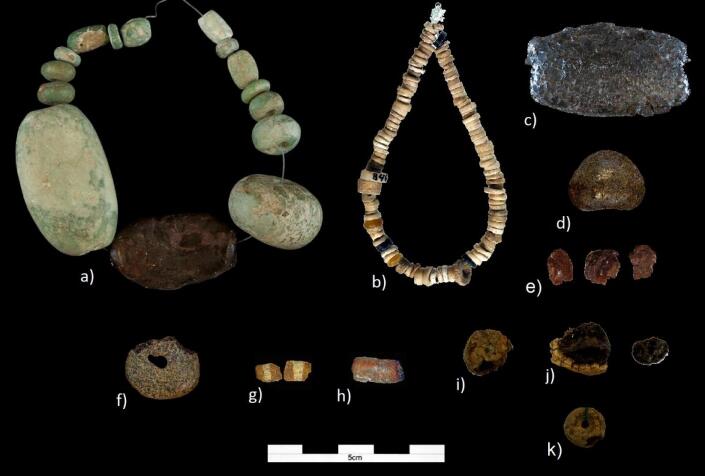Amber circulated in extensive Mediterranean exchange networks in Late Prehistory
New archaeological evidence from the Iberian Peninsula reveals extensive Mediterranean exchange networks of amber resources in Late Prehistory, according to a study published in the open access journal PLOS ONE by Mercedes Murillo-Barroso from Universidad de Granada, Spain, and colleagues.
Amber is a highly valued and unusual gemstone made of fossilized tree resin. Archaeological studies traced the exchange networks of amber raw material and decorative objects in Europe back to the Late Paleolithic (40,000 to 8,000 years BC), but the precise geographical range of these trade routes was unclear. The new evidence comes from a variety of archaeological and geological localities across the Iberian Peninsula.

Header Image - Some of the amber objects analyzed: Credit - Murillo-Barroso et al., 2018
Infrared spectroscopy analyses on 22 amber samples from Portugal and Spain, dating between 4,000 to 1,000 years BC, confirmed previous research showing that in Northern Iberia amber was mostly of local origin, while in the rest of the Peninsula amber objects came from Sicily or the Baltic region. By combining this data with available archaeological information, the authors found that Sicilian amber arrived in Iberia earlier than previously thought, at least from 4,000 years BC. After a decline in amber consumption and trade with the beginning of the Bronze Age, around 2,000 years BC, an influx of Baltic amber gradually replaced the Sicilian amber in Iberia since around 1,000 years BC.
These findings suggest the Iberians engaged in extensive Mediterranean exchange networks in Late Prehistory, and support previous hypotheses on the origin of amber resources in Iberia during this period.
Murillo-Barroso notes: “We have overcome traditional challenges in attempts at assigning corroded amber to a geological source. Thanks to this new work, we now have evidence of the arrival of Sicilian amber in Iberia since the 4th Millennium BC at least. This amber appears at southern Iberian sites and its distribution is similar to that of ivory, so perhaps Sicilian amber reached Iberia through North African contacts.”
Co-author Marcos Martinón-Torres adds: “From the Late Bronze Age we see Baltic amber at a large number of Iberian sites. What’s peculiar is that this amber appears associated to iron, silver and ceramics that point to Mediterranean connections. This suggests that amber from the North may have moved South across the Central Europe before being shipped to the West by Mediterranean sailors, challenging previous suggestions of direct trade between Scandinavia and Iberia.”

